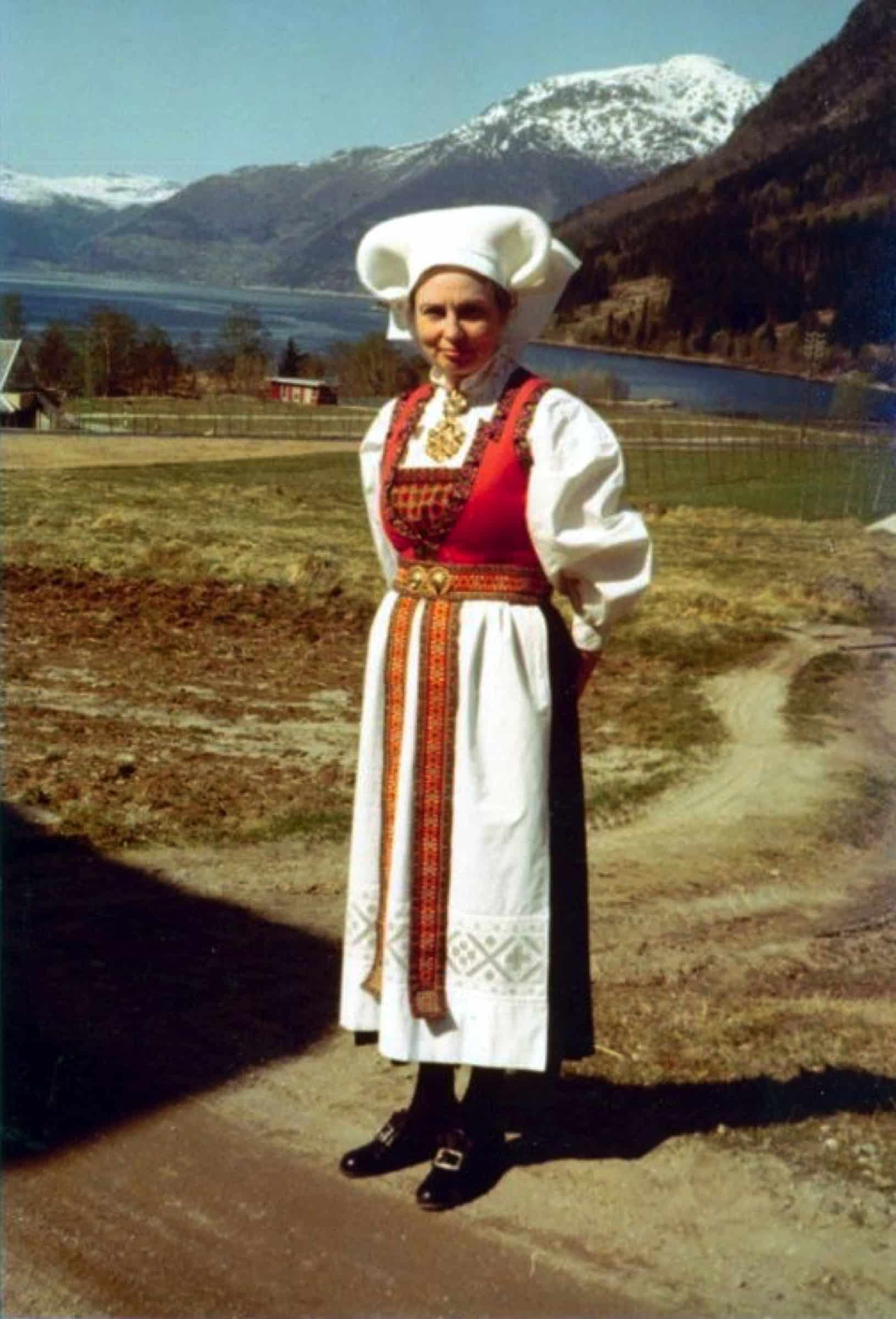Norway is a Northern European country that shares borders with three (3) neighbours: Sweden, Finland and Russia. It is also the cradle of the Viking culture. It is in Oslo, the capital of Norway, that you can visit The Viking Ship Museum and admire the oldest Viking ships in the world.
The most popular decorative art form in Norway is Norwegian Rosemaling, which literally means in Norwegian “Rose Painting”, or in English: painting roses. The history of this art form dates back to 1750, inspired by upper-class artistic styles when Baroque, Regency and Rococo were introduced to rural Norwegian cultures. At first, Norwegian painters closely followed these European styles. The artists then painted by hand. These colorful floral ornaments were found on a multitude of household objects: dishes, baskets, flowerpots, centerpieces, tablecloths, curtains, even fabrics that covered furniture or cushions. Obviously, this art has developed a lot in the decoration of dresses and headdresses intended for women. Norway has its national traditional dress, called “Bunad”. This dress is still worn today on special occasions, such as Confirmation Day for teenage girls, a ceremony performed after baptism on the same day. The national pride of Norwegian citizens is reflected in the wearing of this dress, among other things.
However, the traditional dress was originally decorated with hand embroidery. Nowadays, fabrics and dresses are printed in sublimation on fabric, either on cotton or on polyester. “Painted roses” (Rosemaling) designs continue to be popular and in demand by Norwegians, but this style has been exported over the past few decades and is now known and loved by devotees of this art all over the world.

Searching online shows which platforms sell fabrics printed with painted rose patterns, in the traditional Norwegian style, and you find a lot of interesting results.
Here is an overview of the websites that Google provided as top results with the keywords “Rosemaling fabric”:
- Spoon Flower: https://www.spoonflower.com/en/shop/rosemaling This site offers 242 results of products made with printed fabrics featuring traditional and very colorful Norwegian floral designs.
- Etsy: https://www.etsy.com/ca/market/rosemaling_fabric This well-known site offers 87 results with the keywords above. The products are not only identified as “Folk Norway” (Norwegian traditional) but also “Swedish” (Sweden) and Viking.
- Mahones Wallpaper Shop: https://www.mahoneswallpapershop.com/product/524091-rosemaling-lakeside-by-robert-allen-home-fabric This business sells printed fabrics online that are available by the yard. It is therefore possible to obtain the fabrics with the pattern of our choice by this company and to make decorative items yourself.